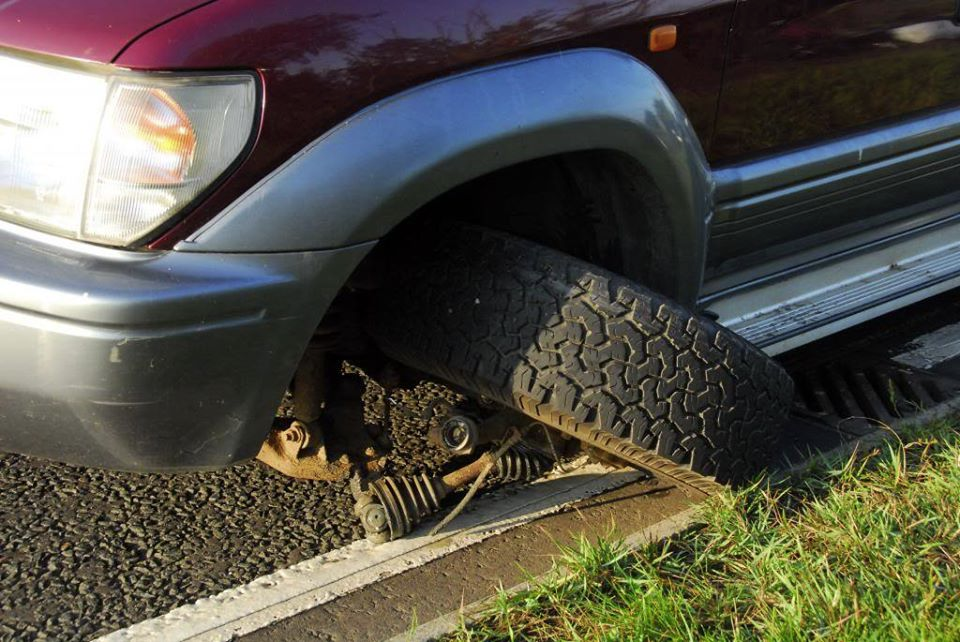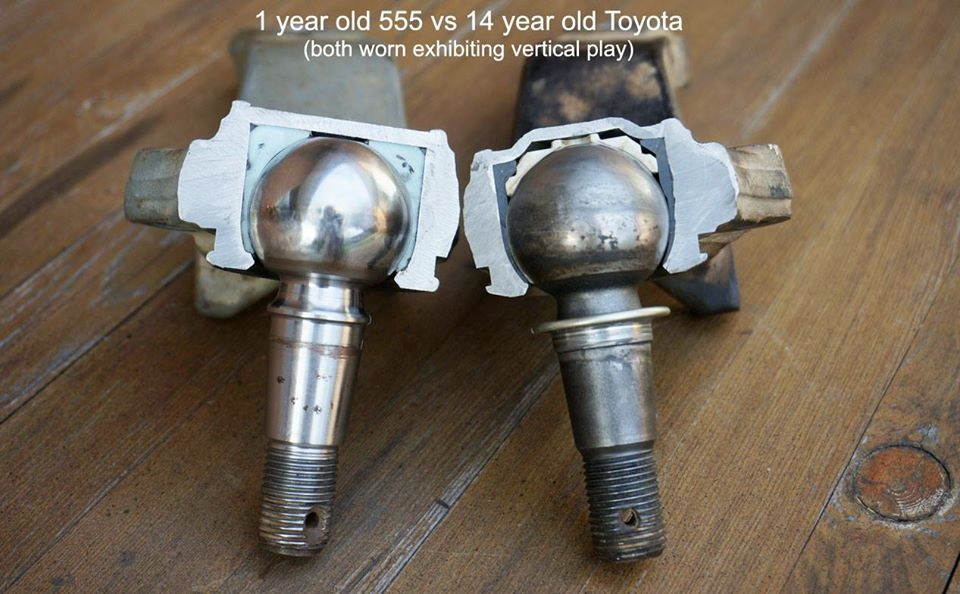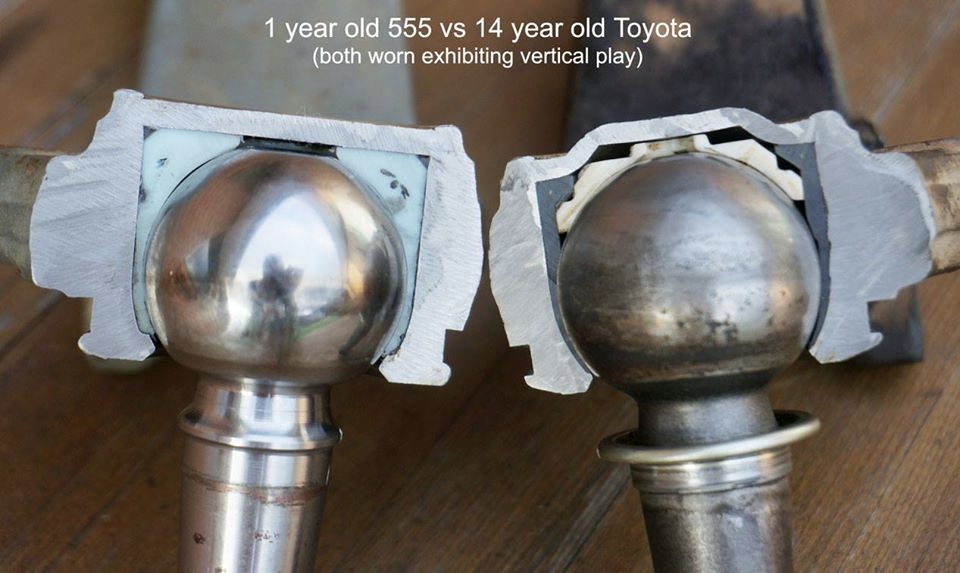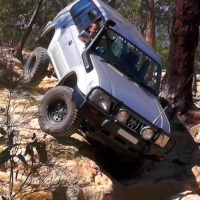Lower Ball Joint (LBJ) Inspection, Prado 90 Series
Toyota Prado 90 Series
LOWER BALL JOINT (LBJ) INSPECTION
_Also related LBJ bolts and torque ratings
This is the result of an upper or lower ball joint failure:

Essential knowledge:
There is a special way to test LBJ - the suspension must NOT be at full droop! See Test A below.
Ball Joint Failures - Introduction:
All vehicles have ball joints of some kind, whether it be Uppers or Lowers for independant suspension arms (wishbones), steering links such as Tie Rod Ends/Rack Ends, even the Sway Bar Links. Specifically for the 90 series; it's quite common to see or hear about a lower or upper failure. In many cases a ball joint failure can cause catestrophic results and a dangerious situation - so regular testing and quality components are a must.
The Causes:
- Age, heavily worn parts.
- Low quality parts.
- Harsh or abusive conditions (corrogations or rough offroad use).
- Extreme suspension droop
- Coilover spacers or other suspension modification issues.
Common mistake during Inspections:
One of the most common checks performed by mechanics and alignment shops involves raising the front tyres and using two hands on opposite sides to wobble the tyre. It'll be performed horizontally, with hands on left and right of one tyre - then vertically, with hands on top and bottom of tyre. Excessive wobble is then visually tracked down to worn components such as Tie Rod Ends or UBJs (Upper Ball Joints). HOWEVER: this check rarely picks up LBJ wear! LBJs must be checked within the joint area with a large screwdriver or similar, and the test ideally, should not be performed at full suspension droop - otherwise joints may be at bind, preventing detection of worn components. If no play is found, it may also be worth testing for play with suspension at droop (vehicle supported by chassis), just to be sure.
Test A - quick:
Testing ONE SIDE at a time:
- Loosen wheel nuts.
- Jack up via the LCA.
- Remove wheel/tyre.
- Lever the LBJ using the LCA as support. Check videos linked further below.
- Refit all parts, then repeat steps for other side.
- If no play is detected, it may be worth testing again with the suspension at droop. That is, to support the vehicle via chassis, allowing the LCA to droop.
Test B - more involved:
- Loosen front wheel nuts.
- Jack up front of vehicle by your preferred means.
- Remove front wheels/tyres.
- Optional: Remove brake caliper and rotors.
- Remove tie rod ends from LBJ.
- Remove entire hub/steering knuckle from the LBJ (undo 4 bolts from LBJ), and somehow support this entire steering knuckle temporarily. NOTE: Be careful not to move far away, as it will pull the CV axle out of the inner tripod cup!
- With the LBJ now free to move, test it's movement by hand. It should rotate smoothly within all it's limits. Poorly designed or suspect joints become dry, have inconsistant or clunky movement.
Inspection intervals:
I'd recommend inspecting before any trips and whilst peforming other routine services. It's very quick and easy anyway. Also perform checks during long and rough overland travels, eg, in Australia, a month of corrugations in Cape York or the outback, can do a lot of harm - plus the added stress from being heavily loaded with gear.
Wear Limit:
Workshop manuals suggest the max play for LBJ is 0.5mm.
Videos of testing worn joints:

http://www.facebook.com/groups/ToyotaPrado90/permalink/777514655777134
http://www.facebook.com/groups/ToyotaPrado90/permalink/539705532891382
http://www.facebook.com/groups/ToyotaPrado90/permalink/746613822200551
Internals of a 90 Series Lower Ball Joint:




